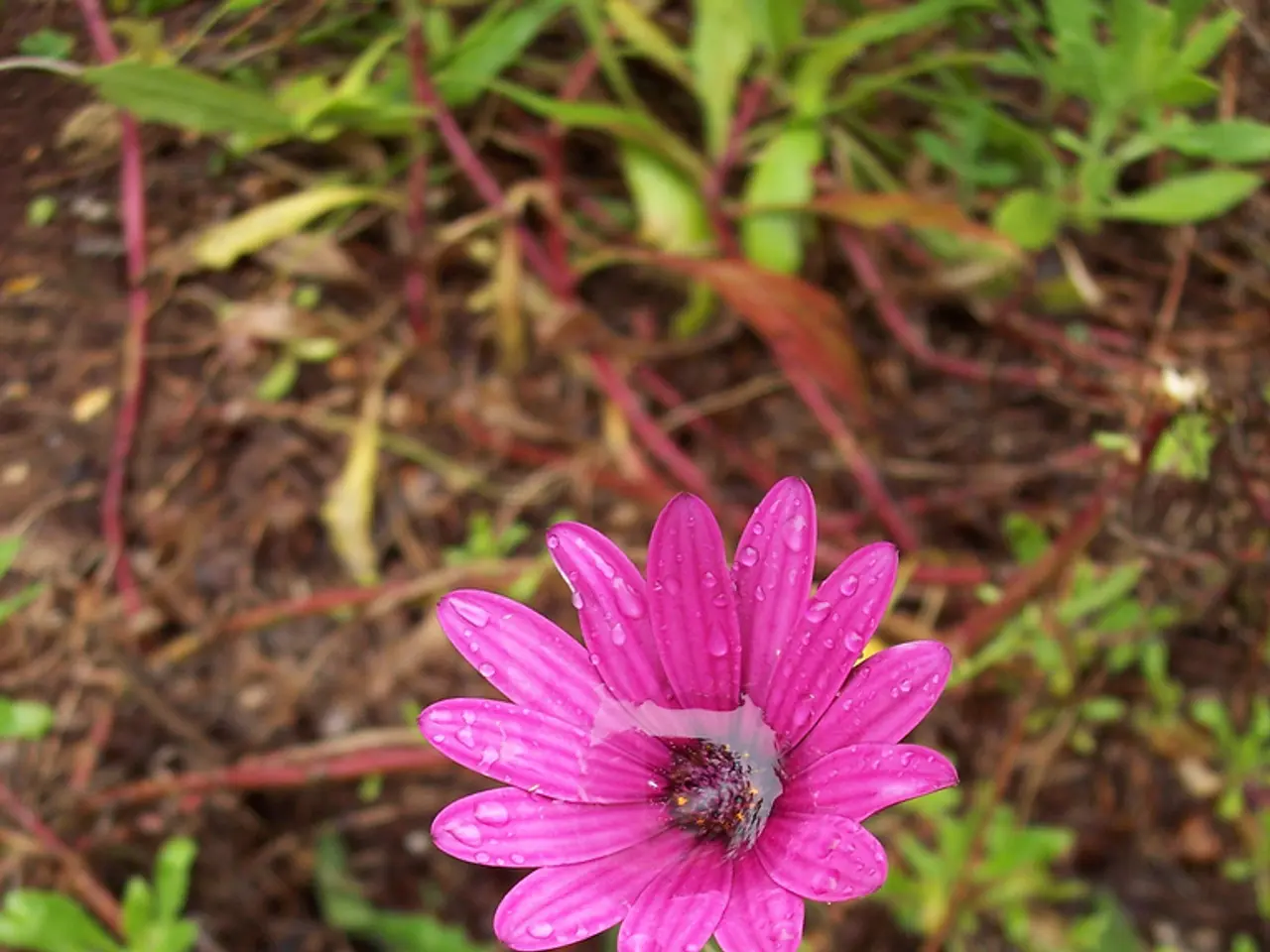Task at Hand: Gardening Activities in July: Highlighting Important Gardening Tasks for July
July is a prime time for gardening, with long, hot days and often dry conditions that can be ideal for a variety of plants. Here's a guide to help you make the most of your garden in July.
Planting
Summer is always a great time to plant all sorts of vegetables, with tomatoes, sweet and hot peppers, zucchini, cucumbers, and eggplant being particularly well-suited for the heat of July. Basil, rosemary, and oregano are herbs that grow quickly and love the full sun, making July a great month to plant them for fresh seasonings throughout the summer.
Watering
Watering is crucial in July due to increased evaporation rates. Deep watering is essential to ensure moisture reaches the roots. Early morning or late evening watering is best to minimize water loss.
Caring for Your Plants
Regularly inspect plants for signs of damage and use natural or chemical treatments as necessary to keep pests in check. Pay attention to nibbling, burrowing, and flying critters that love to feast on your tender crops, as the warm weather can increase the activity of garden pests. Cucumbers need regular watering and support to keep the vines off the ground to prevent rot and disease.
Weeding and Mulching
Weeding is important to keep the garden healthy and prevent weeds from taking over. Mulching helps retain moisture and keeps the soil cooler. Organic mulches like straw, grass clippings, or wood chips protect the soil and improve its quality as these materials decompose.
Dealing with High Humidity
High humidity can lead to problems such as fungal diseases and mold. To combat this, ensure good air circulation around your plants and avoid overcrowding.
Taking Advantage of July's Weather
July's sunlight is intense, providing plenty of energy for photosynthesis. However, too much direct sunlight can cause heat stress in plants. To mitigate this, provide shade for sensitive plants during the hottest part of the day.
Preparing for the Fall Garden
July is a great month to start planning for the fall garden. Some vegetables, such as carrots, beets, and turnips, can be sown in July for a late harvest.
Tips for Drought-Tolerant Plants
Drought-tolerant perennials like coneflowers (Echinacea purpurea), agapanthus, oxeye daisies, musk mallow, and gorse are excellent choices for July gardens. They require less water and can flourish despite intense heat.
Caring for Trees and Lawns
It's important to water trees deeply and slowly to prevent drought stress, especially old and newly planted ones. Mow lawns higher than usual, leaving clippings to conserve moisture and nutrients. Avoid fertilizing woody plants during this hot period to encourage natural hardening-off for winter.
Supporting Wildlife
Maintaining shallow water dishes and wild patches can support wildlife such as bees and butterflies, enhancing garden ecology.
Propagation
For a flourishing garden in hot, dry conditions in July, recommended tasks include taking softwood or semi-ripe cuttings from heat-tolerant plants like salvias, fuchsias, penstemons, buddleia, and roses to propagate more plants.
In summary, July gardening in hot, dry conditions should focus on propagation through cuttings, careful watering strategies, supporting beneficial wildlife, and growing drought-resistant plants and warm-season vegetables that suit extended summer heat. With the right care and attention, your garden can thrive in July.
When planning your garden during July, consider planting heat-tolerant vegetables like tomatoes, peppers, zucchini, and basil, which thrive in the sunlight and heat of the month. To ensure they continue to grow healthily, water deeply and ensure good air circulation to combat high humidity, avoiding overcrowding and providing shade for sensitive plants during the hottest part of the day. For a sustainable lifestyle, consider incorporating home-and-garden practices such as mulching and propagating drought-tolerant plants, like coneflowers or agapanthus, to reduce watering needs and improve your garden's overall appeal.





